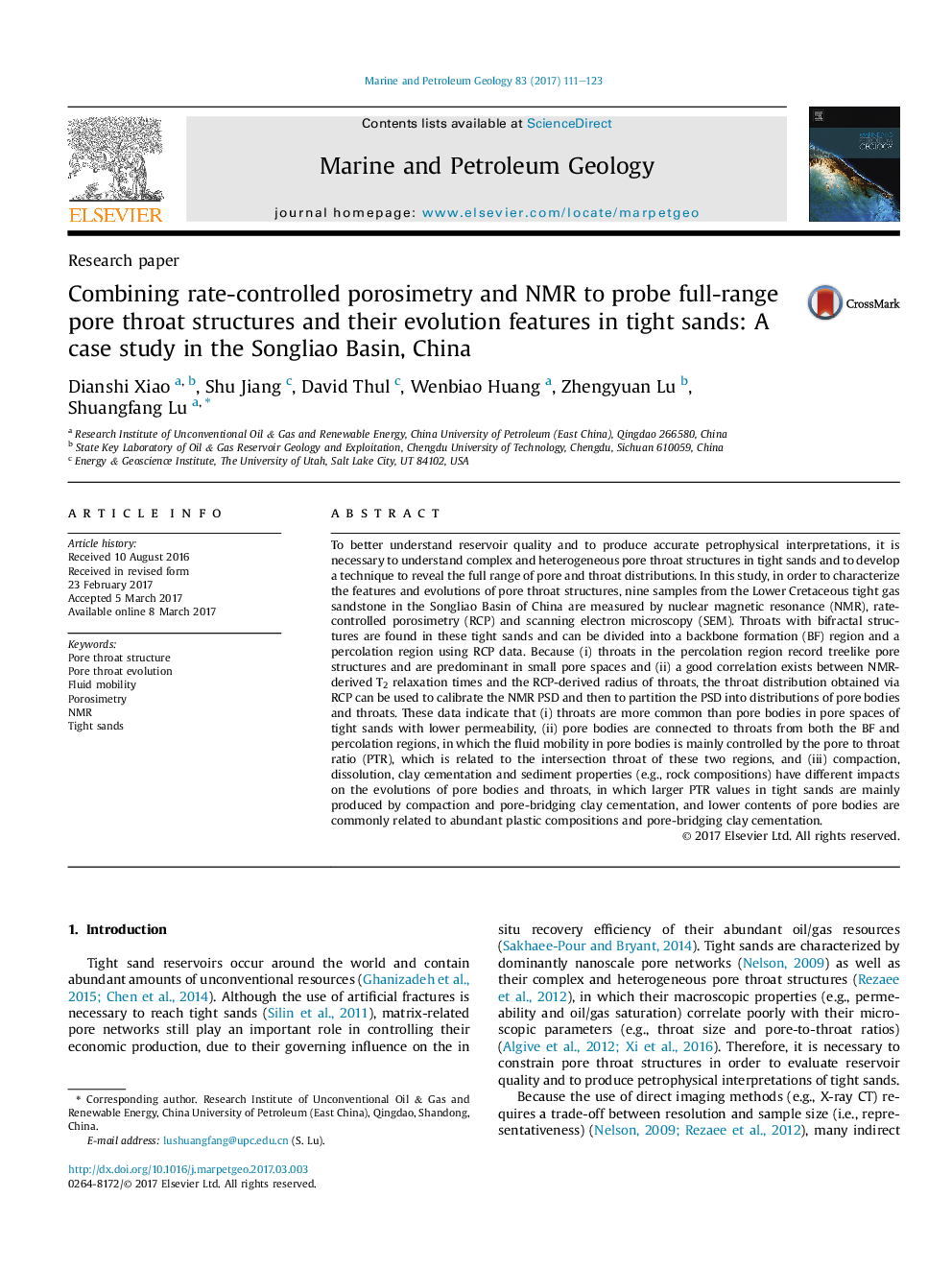| کد مقاله | کد نشریه | سال انتشار | مقاله انگلیسی | نسخه تمام متن |
|---|---|---|---|---|
| 5782151 | 1637144 | 2017 | 13 صفحه PDF | دانلود رایگان |
عنوان انگلیسی مقاله ISI
Combining rate-controlled porosimetry and NMR to probe full-range pore throat structures and their evolution features in tight sands: A case study in the Songliao Basin, China
دانلود مقاله + سفارش ترجمه
دانلود مقاله ISI انگلیسی
رایگان برای ایرانیان
کلمات کلیدی
موضوعات مرتبط
مهندسی و علوم پایه
علوم زمین و سیارات
زمین شناسی اقتصادی
پیش نمایش صفحه اول مقاله

چکیده انگلیسی
To better understand reservoir quality and to produce accurate petrophysical interpretations, it is necessary to understand complex and heterogeneous pore throat structures in tight sands and to develop a technique to reveal the full range of pore and throat distributions. In this study, in order to characterize the features and evolutions of pore throat structures, nine samples from the Lower Cretaceous tight gas sandstone in the Songliao Basin of China are measured by nuclear magnetic resonance (NMR), rate-controlled porosimetry (RCP) and scanning electron microscopy (SEM). Throats with bifractal structures are found in these tight sands and can be divided into a backbone formation (BF) region and a percolation region using RCP data. Because (i) throats in the percolation region record treelike pore structures and are predominant in small pore spaces and (ii) a good correlation exists between NMR-derived T2 relaxation times and the RCP-derived radius of throats, the throat distribution obtained via RCP can be used to calibrate the NMR PSD and then to partition the PSD into distributions of pore bodies and throats. These data indicate that (i) throats are more common than pore bodies in pore spaces of tight sands with lower permeability, (ii) pore bodies are connected to throats from both the BF and percolation regions, in which the fluid mobility in pore bodies is mainly controlled by the pore to throat ratio (PTR), which is related to the intersection throat of these two regions, and (iii) compaction, dissolution, clay cementation and sediment properties (e.g., rock compositions) have different impacts on the evolutions of pore bodies and throats, in which larger PTR values in tight sands are mainly produced by compaction and pore-bridging clay cementation, and lower contents of pore bodies are commonly related to abundant plastic compositions and pore-bridging clay cementation.
ناشر
Database: Elsevier - ScienceDirect (ساینس دایرکت)
Journal: Marine and Petroleum Geology - Volume 83, May 2017, Pages 111-123
Journal: Marine and Petroleum Geology - Volume 83, May 2017, Pages 111-123
نویسندگان
Dianshi Xiao, Shu Jiang, David Thul, Wenbiao Huang, Zhengyuan Lu, Shuangfang Lu,